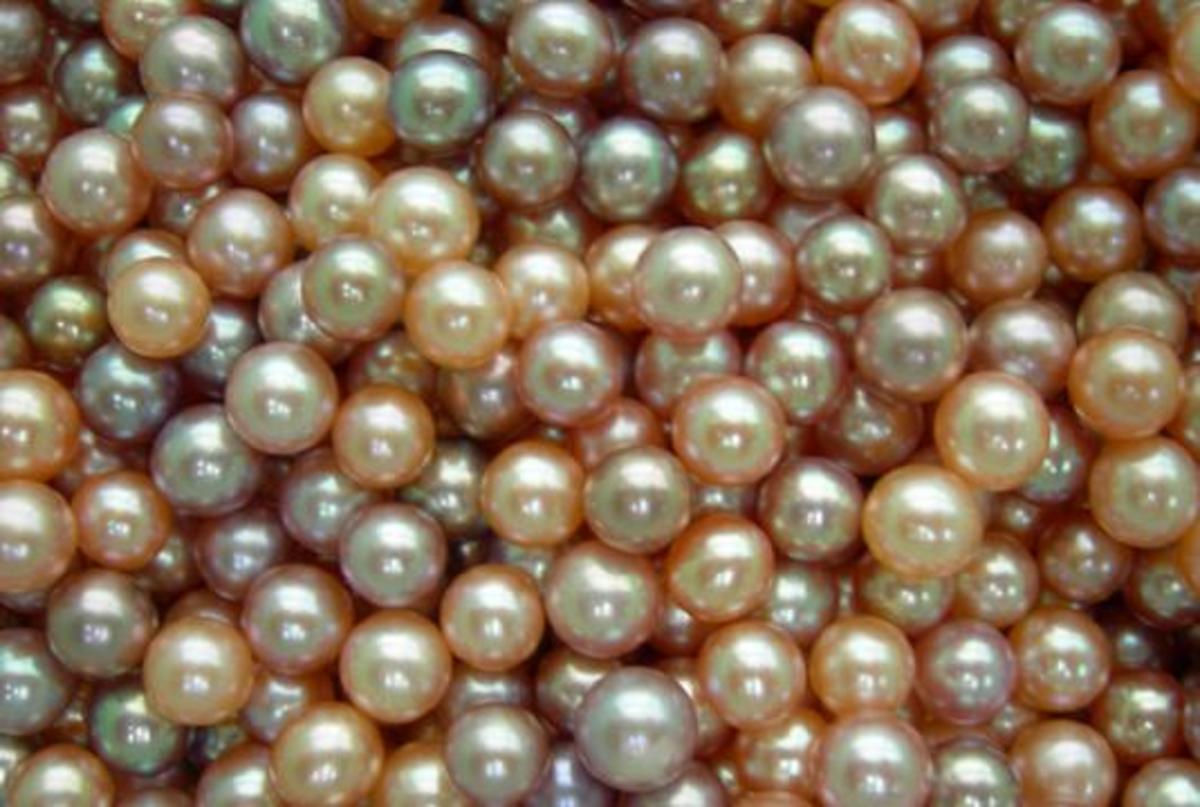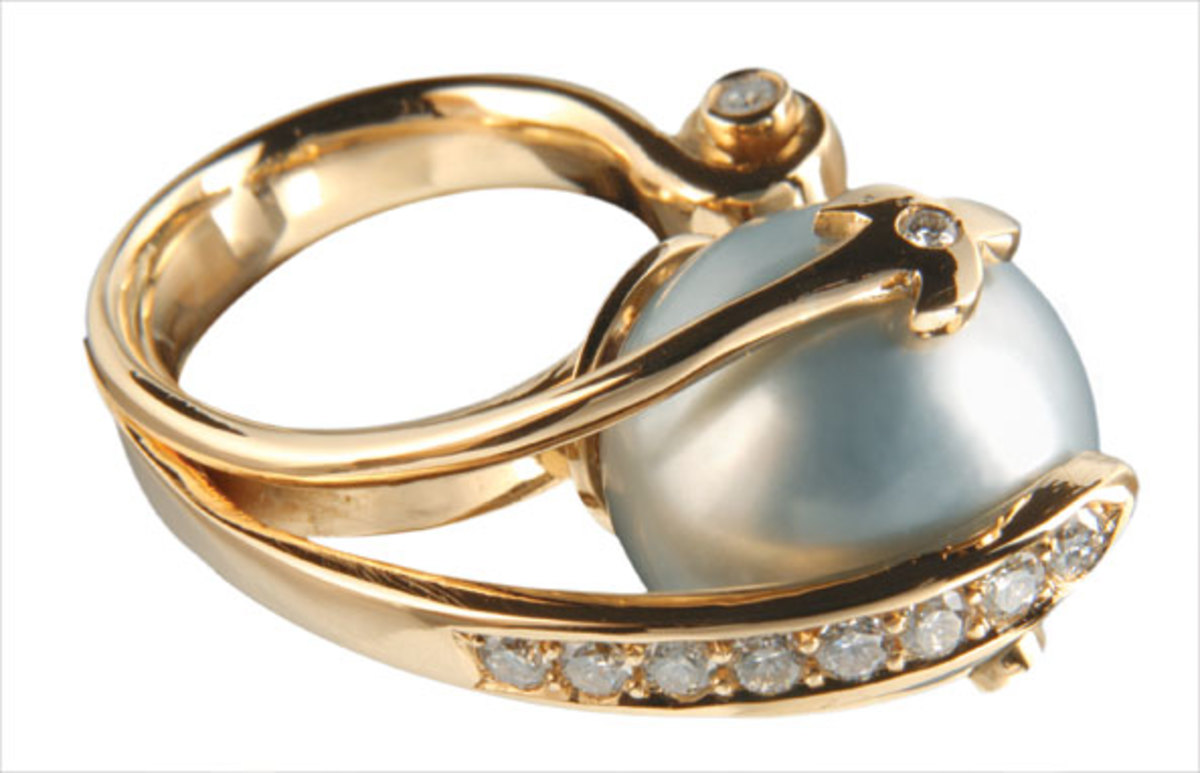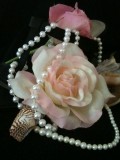Cultured Pearls vs. Natural Pearls
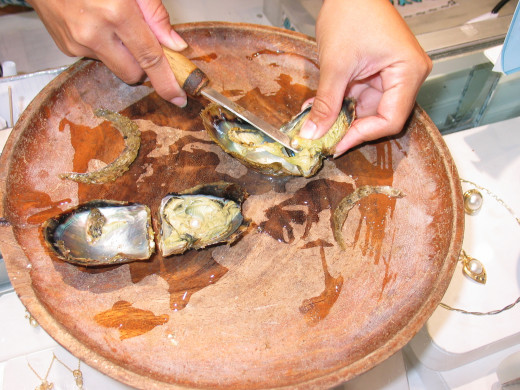
Cultured Pearls vs. Natural Pearls
Throughout history one of the most prized jewels had been the pearl. Natural pearls, or so-called “wild” pearls still fetch astronomic sums and are some of the most sought after treasures in the world. Fortunately for us modern man has figured out a way to bring pearls to ladies of all distinctions. Cultured pearls are just as real and created through the same basic process as natural pearls, they are simply helped along by friendly pearl farmers. But what is the real difference between cultured pearls and natural pearls?
The Magic of Making a Pearl is Irritating
The beautiful mystery that is a pearl begins when a tiny irritant gets inside of an oyster or mussel. In nature this happens when a grain of sand or even microorganism manages to get inside of a tightly closed shell. Once the irritant is inside the oyster’s natural defenses kick in. In order to combat the foreign invader the oyster produces a substance called nacre. Over time the nacre builds up and surrounds the irritant, protecting the oyster from the foreign matter and also creating a beautiful pearl at the same time. In nature this is a rare occurrence, but once man understood how the pearl was made it was an easy jump to figure out how to make pearls in a controlled environment.
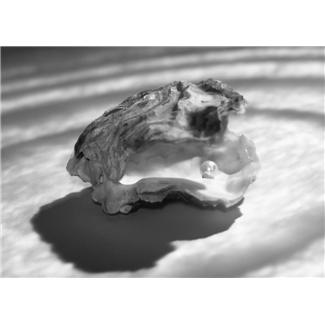
The Glamorous Life of a Pearl Farmer
Ok, well I suppose looking after a bunch of shellfish is not the most glamorous job on the planet but at least the harvest is unlike any other! Pearl farmers grow pearls in oysters and mussel by introducing a foreign irritant, often mussel tissue or mussel shell, on purpose in a controlled environment. Once the irritant is introduced during a very surgical and precise operation the oyster or mussel produces nacre just like it would in the wild, creating a pearl over a period of many months. Cultured pearls are more uniform in size and shape because the nucleus, or irritant, introduced is of controlled and uniform size and the pearl tends to take the shape of the nucleus introduced. Saltwater oysters produce fewer pearls than freshwater mussels and thus the price tends to be a bit higher because saltwater pearls cannot be produced in the same quantities as freshwater pearls.
Pearl farming is a long, exhaustive process that can take years to see any results. From the time a pearl farmer starts with microscopic larvae to harvesting pearls can take up to three or four years. Typically oysters are not even implanted with a nucleus until they are about two years of age. Pearl farming is an endeavor for those who are willing to wait to reap their rewards, and oftentimes is a family business passed down through generations.

To Market to Market…
Of course, growing and harvesting the pearls is just one step of the long process that brings gem quality pearls into the jewelry market. Once the pearls are harvested they are sorted by shape, size, color and luster. Saltwater pearls can come in many colors, such as Tahitian pearls, which are black, and South Sea pearls which take on whatever color their host shell is. Freshwater pearls on the other hand can be dyed any color the jeweler wishes. Sorting pearls is done by hand by experts who can determine the quality and value of each pearl and who can match pearls together to be put into sets of jewelry or stranded pearls necklaces. Keep in mind that even cultured pearls are still a natural product made by a living being and thus it is very hard to control their formation. This means that it takes quite a lot of sorting and effort to match strands of pearls to make beautiful pearl necklaces and other jewelry.
Which do you prefer, cultured pearls or natural pearls?
So Which is Better…Cultured Pearls or Natural?
In actuality cultured pearls and natural pearls are the exact same thing, made from the exact same substance. In fact the most common method of differentiating the two is using an x-ray to determine what the nucleus of a pearl looks like. Only in this way can a jeweler see the uniform nucleus that is the trademark of a cultured pearl. Natural pearls are simply much rarer and completely a product of nature. It’s up to the individual buyer to determine if the massive difference in price is really worth a simple difference of a pearl made completely by chance or if human intervention in the creation process makes the discounted pearl less valuable.

